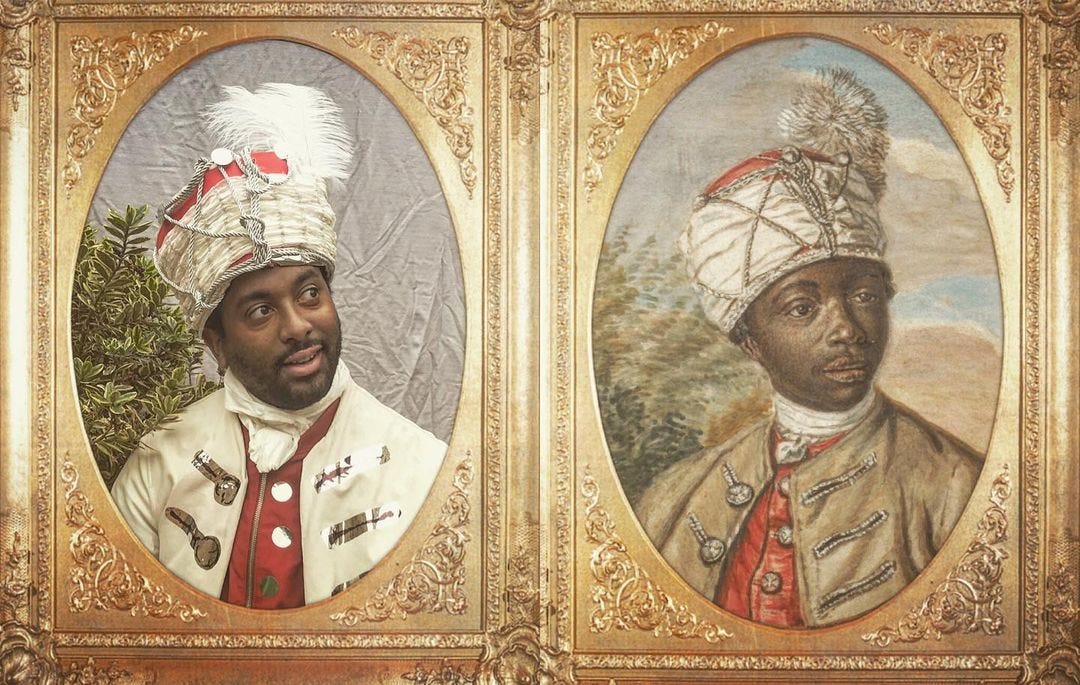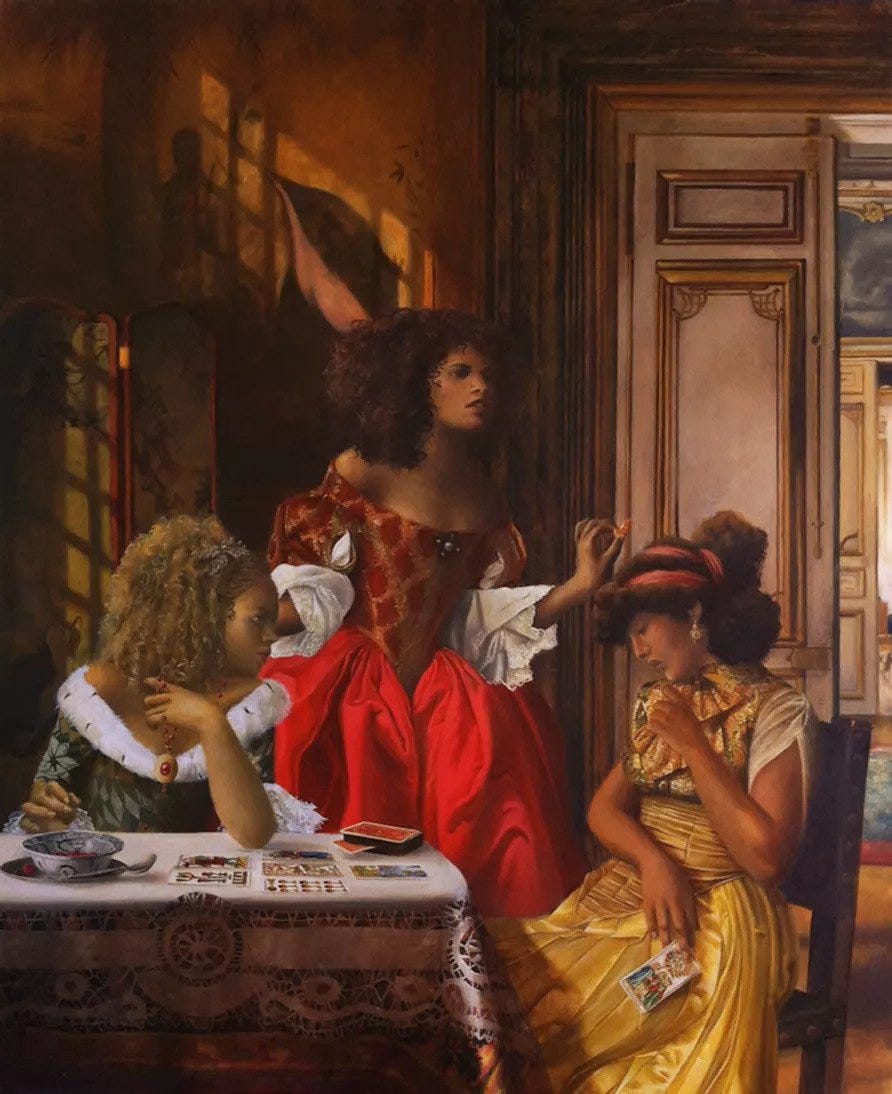Why "The power of representation is important."
Upending "the history of problematic uses of images of black people in the decorative arts and high fashion."
Hello everyone,
As I mentioned last week, I would be sharing with you the culmination of a new partnership we have unveiled with Holt Renfrew for Black History Month. This week’s newsletter introduces you to scholar Dr. Jonathan Square, who developed the research for this partnership, offers you the latest reading list from our library, and invites you to my appearance on WGBH Boston’s series, ‘BostonTalks,’ happening this Wednesday.
Introducing the FRD x Holt Renfrew research partnership, celebrating Black History Month

This month, the Canada-based, luxury retailer Holt Renfrew is partnering with The Fashion and Race Database to celebrate Black History Month. Our partnership has culminated in the commissioning of research by a Black fashion scholar, and, in this effort, we are proud to bring you the scholarship of Dr. Jonathan M. Square.
Dr. Square is not only the researcher for this partnership, he also sits on our advisory board. You can learn more about his outstanding work on his website.
Re-examing fashion history
Over the next couple of weeks, I will share with you Dr. Square’s research project with us–three essays, to be precise–which call for mindfulness and respect when it comes to the representation of Black people. Further, Dr. Square will call our attention to brilliant artists who have interrogated the white gaze and troubled the histories of racist objects–and he will call out problematic practices in the fashion industry.
We begin with a small collection of images curated by Dr. Square, as he introduces you to three Black artists who are constructing their own representations of blackness in history:
Painter Elizabeth Colomba has said: “The power of representation is important. For me, what is foremost is not to erase history but to expand the narrative. It’s important to create a representation of black people which deviates from the expected roles portrayed in Western visual culture.”

Artist Fabiola Jean-Louis, like Colomba, inserts black women into white dominated historical narratives in her creative practice that deftly mixes photography, collage, and paper sculptures.

British opera singer Peter Brathwaite has recently gained notoriety for the #GettyChallenge, recreating famous works of arts that include people of African descent. Though many of these works include racist depictions of black people in the form of blackamoors, Brathwaite re-appropriates these images and strips them of any representative power.
Unlike the examples above, I've written three essays that will delve into the history of problematic uses of images of black people in the decorative arts and high fashion, in an effort to bring light to ongoing conversations about race, inclusion, and representation.
Next week, we will highlight Dr. Square’s critical examinations of the legendary Vogue fashion editor, Diana Vreeland, as well as an object she adored – the decorative blackamoor.
From The Library: Fashion and the Body
This week, Research Assistant Kai Marcel takes us through their thoughts on the politics of the body, gathering several books and articles for you to consider:
The relationship between fashion and the body is integral to our understanding of our social and material lives. This list highlights five sources that interrogate the ways in which institutions, such as national governments, the fashion industry, and medicine, have defined and refined corporeal meaning and boundaries. The authors featured in this week’s roundup ask us to consider the hegemonic norms that have institutionalized what it means to be beautiful, desirable, marketable, and normal, and what kinds of bodies should or can signify these qualities.
The Biopolitics of Beauty: Cosmetic Citizenship and Affective Capital in Brazil by Alvaro Jarrín (Book)
‘Race as Aesthetic: The Politics of Vision, Visibility, and Visuality in Vogue Italia’s “A Black Issue”’ by Brandi Thompson Summers (Article)
Twisted: The Tangled History of Black Hair Culture by Emma Dabiri (Book)
‘Celebrity Biometrics: Norms, New Materialism, and the Agentic Body in Cosmetic Surgery Photography’ by Luciana Ugrina (Article)
‘Deviant Bodies and Suitable Clothes’ by Ingun Grimstad Klepp, Mari Rysst (Article)
‘The Library’ is where we collect and organize countless educational sources all in one place. Referenced by educators, students, fashion enthusiasts and curious minds, this multi-faceted repository provides an expanding selection of tools for learning about all matters connected to fashion, appearance, power and the impact of ‘race.’
Do you appreciate our content and research? Learn about our sponsorships or support us with a one-time or monthly, sustaining donation!
The Calendar: BostonTalks: ‘The 1920s and Now’ (Virtual) – featuring FRD founder, Kim Jenkins
About this event:
The 1920s brought us a pandemic, social unrest and race riots, developments in technology, a fashion revolution and a resurgence of feminism. Now, a century later, can we anticipate another roaring ‘20s? Join us virtually as The Curiosity Desk’s Edgar B Herwick III interviews two experts who will help answer this question.
First up, professor Nicholas Christakis will discuss social behavior then and how he anticipates people will behave now post-pandemic. Next, hear from professor Kim Jenkins about fashion, race and culture in the 1920s and where we’re heading in the 2020s.
Edgar will select queries from the audience and even ask you a few of his own!
Featuring:
Nicholas A. Christakis
Sterling Professor of Social and Natural Science, Yale University
Nicholas A. Christakis, MD, PhD, MPH, is a social scientist and physician at Yale University who conducts research in the fields of network science, biosocial science and behavior genetics. He directs the Human Nature Lab and is the Co-Director of the Yale Institute for Network Science. He was elected to the National Academy of Medicine in 2006, the American Association for the Advancement of Science in 2010 and the American Academy of Arts and Sciences in 2017. His recently wrote Apollo’s Arrow: The Profound and Enduring Impact of Coronavirus on the Way We Live.
Kim Jenkins
Assistant Professor of Fashion Studies at Ryerson University
Kim became best known for designing a course and exhibition called Fashion and Race and has shared her insights globally in industry forums and institutions. Her expertise in fashion history and infusing ‘race’ into fashion theory education has led to consulting work for Gucci, the Centraal Museum, and other corporate brands and organizations. Kim is the founder of the Fashion and Race Database, an online platform that expands the narrative of fashion history and challenges misrepresentation within the fashion system.
Hosted by Edgar B. Herwick III of GBH’s Curiosity Desk
Edgar runs GBH’s Curiosity Desk, where he aims to dig a little deeper (and sometimes askew) into topics in the news and looks for answers to questions posed by the world around us.
You can register for this event via our calendar page.
A global network of events, conversations and opportunities will continue to evolve the discourse on fashion and race. ‘The Calendar’ and ‘Opportunities’ remains on the pulse and keeps you looped in.
That’s it for now. Please stay safe and we’ll see you next week.
Yours in service and solidarity,
Kim Jenkins
The Fashion and Race Database Team: Rachel Kinnard, Daniela Hernandez, Kai Marcel, Laura Beltrán-Rubio





